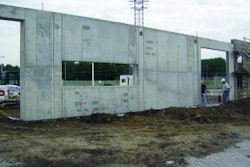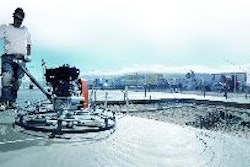There's been much debate over whether or not the $787 billion stimulus program is actually doing what it was intended to do ? put Americans back to work. The Recovery Accountability and Transparency Board, a government oversight board assigned to report how and where taxpayer money was spent, and more importantly how many people were hired to build those projects, released a report Oct. 15 stating 30,000 jobs were saved during the first few months following passage of the American Recovery and Reinvestment Act.
Those jobs are connected to approximately $16 billion in actual federal stimulus contracts, which is a meager start of what should be a healthy infusion of jobs. The Obama Administration projected 3.5 million new or saved jobs by the end of 2010 under the stimulus program.
Unfortunately, the report provides little data that supports either view on whether or not the program has or will improve our current struggling economy. As the program moves forward and more funds are released to qualifying projects, we should all have a clearer picture of what has or has not materialized in the way of job creation and an improved economy.
To find out firsthand how stimulus money supported specific road projects, Asphalt Contractor is featuring two in this issue. Both the Minnesota Department of Transportation I-90 resurfacing and the Manistee County Michigan hot in-place preservation projects may not have happened this year without the stimulus funding.
In the case of the I-90 project near Albert Lea, MnDOT and Freeborn County proposed a joint project, which helped to qualify for stimulus funding and made it possible to move forward with the required work this year. Under stimulus program requirements, the primary contractor, Ulland Brothers Inc. of Albert Lea, hired three new employees who had no prior asphalt roadway experience and provided 4,000 hours of documented training. More importantly, stimulus funds saved 20 to 30 Ulland jobs.
As for the preservation project, the City of Manistee, MI and Manistee County qualified for much-needed stimulus funding to repair a well-travelled road that runs through both jurisdictions. Working together to package the two sections of roadway created an economy of scales that improved the project's stimulus qualification chances. Without stimulus funding, the Stronach Road project in Manistee County probably would not have happened this year.
As of September 30, $30 billion in infrastructure-related stimulus funding has been allocated to specific projects, with only $3.65 billion actually paid out for completed work. That means more work and more jobs created/saved to come.
If we can just get Congress to move quickly on a new surface transportation bill, the momentum will continue to build, the quality of highways and bridges will improve, and the economy will benefit greatly in the process.
Greg Udelhofen, Editor



















